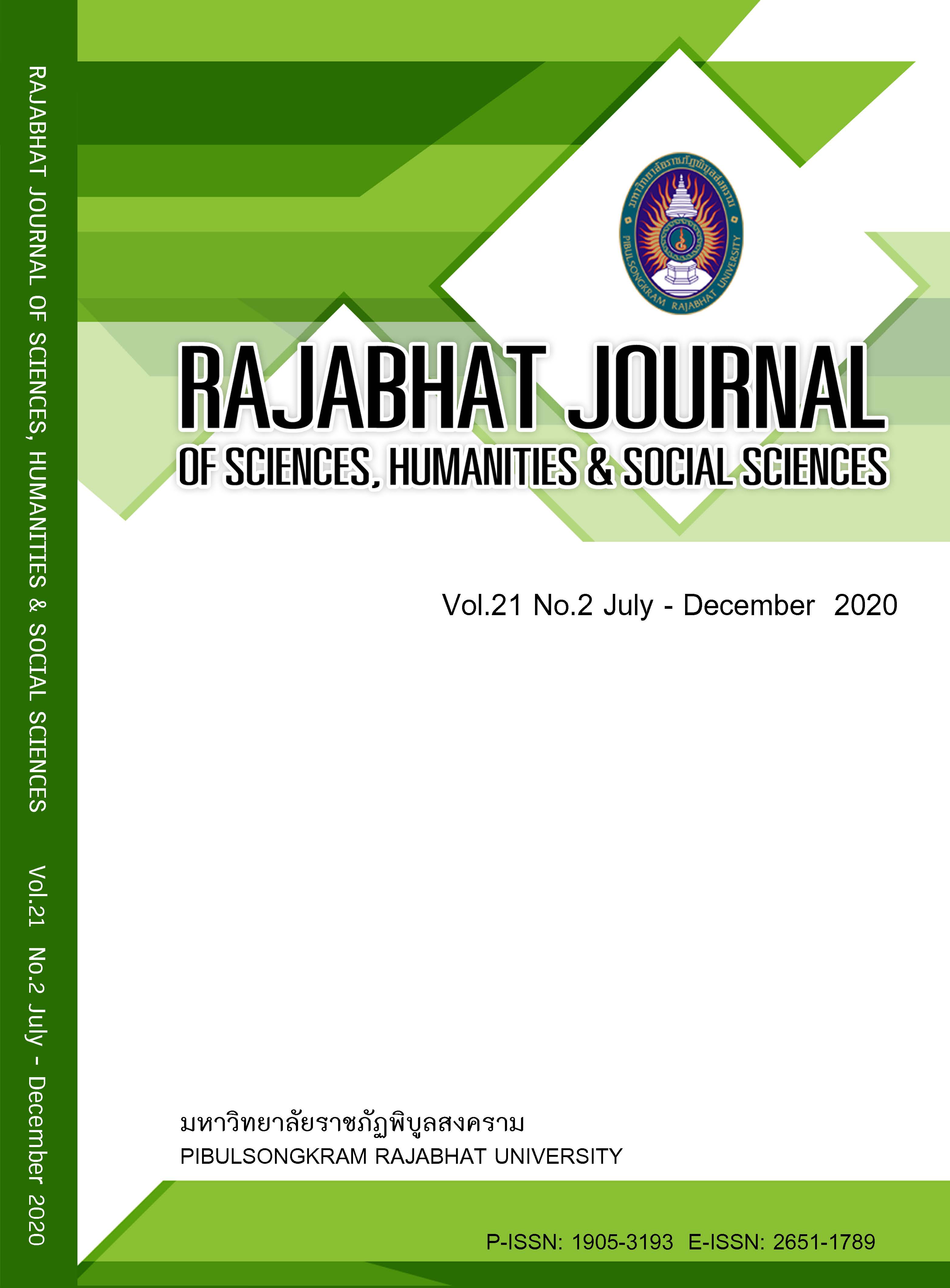HISTORICAL INVESTIGATION OF POTTERY WARE IN CULTURAL RIVER BASIN OF PHITSANULOK: WITH GUIDELINES FOR LOCAL COMMUNITY POTTERY WARE DEVELOPMENT
Keywords:
Retracing, Earthenware, Cultural river basin of Phitsanulok, Local earthenware products designAbstract
The research retraced the earthenware which were found along the cultural river basin of Phitsanulok province. The research objectives were: 1) to study the history of pottery along the cultural river basin of Phitsanulok province, 2) to investigate the raw materials used for molding of the pottery, 3) to develop the patterns for community pottery and, 4) to establish the learning center for earthenware found along the cultural river basin of Phitsanulok. The results revealed that water significantly influenced people’s way of living. Ancient communities always settled along rivers which was the fundamental for supporting their life. Earthenware has been found to be a part of human life since the prehistorical era. This was also the case for Phitsanulok province. The ancient kilns and some old but in good-condition potteries were found at Bann Na Kai Khea, Nabua sub-district, Nakhorn Thai district. This recovery was useful for the development of local community potteries, in line with the development projects such as the Greater Mekong Subregion (GMS) project, East-West Economic Corridor (EWEC) and R9 pathway which linked Phitsanulok to other regions. For the second objective of this research, local clay materials suitable for molding of the potteries were developed. In terms of the third objective, this study developed the pottery patterns that were easy to mold as well as preserved the original local identity. For the fourth step, knowledge transfer and pottery course were conducted at Bann Na Kai Khea School to support the “Moderate Class, More Knowledge” policy. This encouraged and raised up the attitude of local people toward the ancient’s life that reflected the importance of kilns and earthenware products originated at Bann Na Kai Khea Community, Nabua sub-district, Nakhorn Thai district, Phitsanulok province.
References
Rajanubhab D. History of Tableware and Molding. Mongkol Publishing House: Bangkok, 1968.
Chaem Khun Thian P. Guidelines for Preserving the Cultural Heritage of the City of Phitsanulok. Chaing Mai: S. Sup Printing; 1992.
Sa-Nguan-Hai H. History of Phitsanulok. Phitsanulok: Duplicated Document; 1998.
Committee for Documentation and Archives under the Board of Directors for Organizing Events to Honor His Majesty the King. Cultural Development of History, Identity, and Wisdom within Phitsanulok Province. Bangkok: Fine Arts Department; 1999.
Sangkhanukit P. The history of Phitsanulok and the pottery kiln of Wat Ta Pa Khao Hai: Seminar documents “Local Cultural Leader Ban Ta Pa khao Hai” Hua Ro Subdistrict, Mueang District, Phitsanulok: Phitsanulok; 2002.
Mankhong S. Preliminary Report for Survey and Archaeological Explorations in Kwai Noi Dam under the Patronage of the King Wat Boad, Phitsanulok. Phitsanulok: Duplicated Document; 2003.
Wongth S. Pottery and Porcelain and the Economic and Social Development of Siam. Bangkok: Matichon; 2007.
Downloads
Published
How to Cite
Issue
Section
License
Each article is copyrighted © by its author(s) and is published under license from the author(s).










